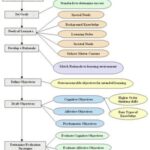Over the many years as a teacher I have tried to be creative in the classroom even with the testing. There are a few different viewpoints on the process of testing and assessment in general. The most common viewpoint is that testing is an evaluation of the instruction that has been given and is more of a terminal point of a given instructional segment. Another concept is that testing is an extension of the instruction and can be an important learning experience in itself. Testing is important because it does often create an added value to the instruction. Students stay more focused if they expect testing to follow instruction. Testing analysis can improve future instruction through the process of self evaluation and test evaluation.
One of the ways that I tried to conduct a very short quiz was to print the quiz on a 4 x 6 inch index card. Not every printer can print on an index card properly. Some will get jammed, some will print in the wrong location, some will smear the ink etc., but when this works properly it can be very rewarding.
The graphic shows a sample of q quiz that I used to check the class on their identification of some lab equipment. We would discuss the major equipment pictured and their structure. For example the graduated cylinder has markings on the side “graduations”. We would talk about how as you “graduate” from one grade to the next, the graduated cylinder is marked in graduations from one unit to the next. The Erlenmeyer flask is designed so that you can swirl a liquid in the flask with less danger of splashing some of the liquid out of the flask, how there are different size beakers and how the pour spout is designed to minimize dripping, how the gas collecting bottle is structured to provide a large area above a liquid that may be in the base area is available for any gas that may be generated and that the mouth of the generating bottle is large enough to accommodate a cork that can hold two glass tubes. We also would discuss the use of the funnel. Many more pieces of equipment were discussed.
Once these cards are made, they can be used year after year. The cards could even be laminated in the media center. I have made sets of cards like this for a color blindness test, for written quiz questions, for instructions for an assignment and even for a study set of questions that students could use to quiz each other. The cards design would be saved in the computer and could be modified as errors were discovered or the card needed to be updated. These sets of quiz cards do not take up much room and could be made on larger card stock and possibly printed 2 or three to a page. Some card stock does not go through some printers well either.
These cards really work well a quick quiz just after a lecture or right at the start of class. They could contain “bell work” that would not take a great deal of time. Other teachers have borrowed the sets of cards I have made. Other unique ways to make tests and quiz material is to make them in some manner that they could be graded more quickly. To grade a test quickly a cardboard stock overlay can be used and sections can be cut out where the answer should be located. This helps to focus you attention only on the answer location. On multiple choice Scantron tests we would sometimes take a piece of glass tube and heat the end in a Bunsen burner and then burn holes into a master Scantron sheet at the answer locations. This then made a master that could be placed on top of the student’s sheet for grading. Sometimes the Scantron machine did not work and this was the alternate method of quick grading.
Many computer based tests will now grade the test immediately and provide a report, but teachers are likely to still have to do a lot of testing in their classrooms the old way.

